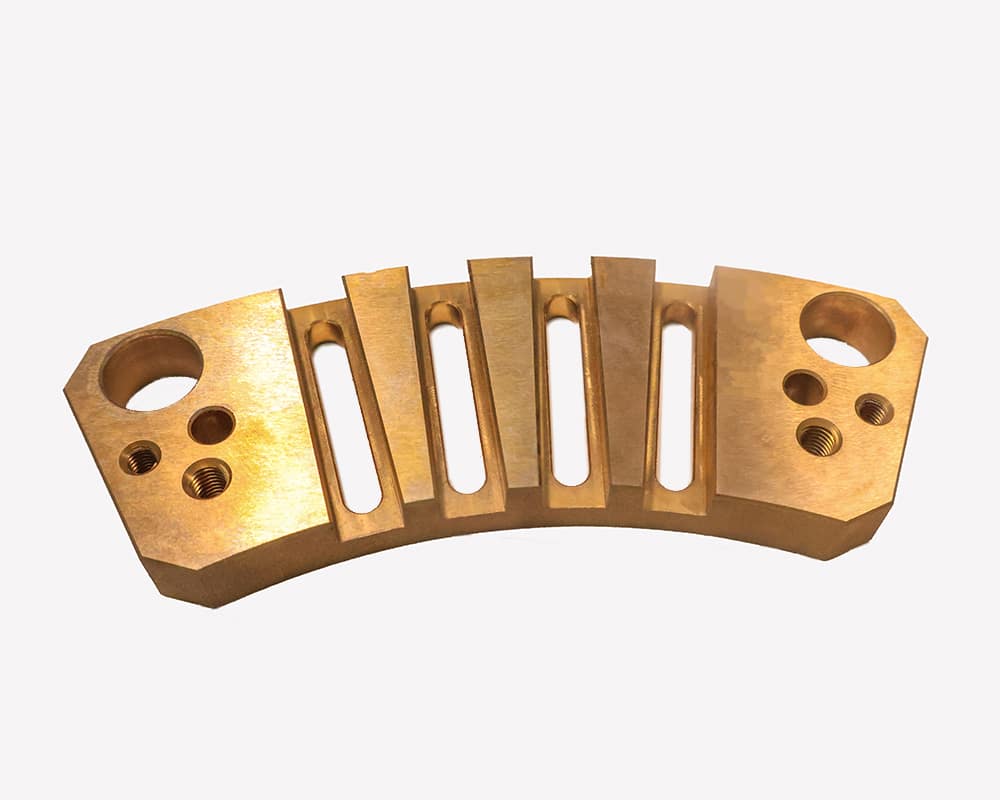Beryllium Copper
In modern life, electronic devices have become indispensable companions. Mobile phones allow us to stay connected with family and friends anytime and anywhere, while computers help us work more efficiently; cars take us to places far and wide. But have you ever wondered what materials make up the parts inside these essential products? In fact, many of their internal components are made from a special alloy — beryllium copper.
Beryllium copper, as its name suggests, is an alloy composed of beryllium and copper. It is a high-performance alloy with copper as the base and a small amount of beryllium (typically 0.2%–2%). In some cases, elements such as nickel or cobalt are also added to further enhance its properties. Although these elements are present in small quantities, they endow beryllium copper with unique and exceptional characteristics, enabling it to play an irreplaceable role across many industries. Beryllium itself is considered a sensitive metal, closely monitored by major military powers around the world.

The reason beryllium copper stands out across so many industries lies in its exceptional performance. Let’s take a closer look at the remarkable properties that make this alloy so impressive.
High strength and hardness while maintaining excellent ductility:
Beryllium copper is an age-hardenable copper alloy, and its strengthening primarily results from the precipitation of submicroscopic, finely dispersed phases of beryllium within the copper matrix.
During the solution treatment stage, at a high temperature of about 780–800°C, beryllium atoms completely dissolve into the copper matrix, forming a uniform solid solution. This is followed by rapid quenching, which “freezes” the high-temperature structure in place. At this stage, the material is relatively soft and highly ductile, making it easy to form and machine, with a tensile strength of 1100–1400 MPa.
In the aging treatment stage, the alloy is held at around 300–350°C for a certain period, allowing beryllium atoms to precipitate from the supersaturated solid solution and form extremely fine CuBe intermetallic compounds. These finely dispersed precipitates are uniformly distributed within the grains, impeding dislocation motion and thereby significantly enhancing the alloy’s strength and hardness, which can reach HRC 38–45.
Moreover, the strong bonding between the precipitates and the matrix ensures uniform stress distribution, enabling the material to maintain excellent plasticity and ductility under deformation. As a result, beryllium copper achieves high strength and hardness while retaining superior bendability, formability, and ductility.
Excellent electrical and thermal conductivity:
The matrix of beryllium copper is still copper, whose electronic structure (monovalent electrons and low resistivity) gives it inherently high electrical and thermal conductivity. Although the addition of a small amount of beryllium slightly disturbs the copper lattice and reduces conductivity, the beryllium content is very low (typically only 0.2%–2%) and does not significantly disrupt the conductive network of copper. As a result, beryllium copper retains about 20%–60% of the conductivity of pure copper, which is more than sufficient for electrical contact components and heat-dissipating parts, providing excellent electrical and thermal performance.
Excellent wear resistance and fatigue strength:
After undergoing solution treatment and aging, beryllium copper precipitates extremely fine CuBe phases (about 10–50 nm in size). During dislocation slip, these fine precipitates act as “pinning points,” requiring higher stress for dislocations to move, thereby hindering dislocation motion and significantly improving the alloy’s yield strength and fatigue strength.
The nanoscale precipitates also help distribute stress uniformly at the microscopic level, preventing stress concentration at any single point. As a result, fatigue cracks are less likely to initiate or propagate, giving beryllium copper excellent resistance to fatigue failure. This makes it especially suitable for applications involving high-frequency contact and repetitive motion.
Non-magnetic and spark-resistant properties:
Beryllium copper exhibits excellent non-magnetic and spark-resistant properties. Its matrix is composed of copper and beryllium, without magnetic elements such as iron, nickel, or cobalt. The absence of unpaired electrons in its electronic structure prevents attraction by magnetic fields or generation of magnetic interference, making it suitable for use in magnetically sensitive equipment and precision instruments. Additionally, beryllium copper has high thermal conductivity and good toughness, allowing heat generated from friction or impact to dissipate quickly without forming localized hot spots. Combined with the lack of iron, it does not undergo oxidative combustion, thereby preventing spark formation. Thanks to these inherently safe characteristics, beryllium copper is widely used in explosion-proof tools, oil and gas equipment, and electrical contact components in the aerospace industry.
High corrosion resistance:
Beryllium copper possesses outstanding corrosion resistance. Its copper matrix forms a dense Cu₂O protective layer in air, while the beryllium component further generates a stable BeO passivation layer, creating a robust composite protective film that effectively blocks oxygen, moisture, and corrosive media. In addition, beryllium copper has a fine and uniform microstructure, with minimal impurity segregation or potential differences, making it resistant to electrochemical corrosion. Thanks to this excellent chemical stability and protective film mechanism, beryllium copper can maintain surface integrity and mechanical strength over long periods in marine, chemical, and high-humidity environments, performing significantly better than ordinary brass or bronze alloys.
Common grades
C17200 (BeCu25): Chemical composition: Be 1.8–2.0%, Co + Ni 0.2–0.6%. This grade is widely used and, after aging, exhibits high strength, making it a high-strength type.
C17500 / C7510: Chemical composition: Be 0.4–0.7%, Co/Ni 2%. It offers better electrical conductivity than C17200, making it a high-conductivity type.
QBe2.0, QBe1.7 (domestic): Similar to C17200, these grades have stable performance and good machinability.
Wide-ranging applications,ubiquitous
Mold Industry: Injection mold inserts, hot runner nozzles, cooling cores, mold cores and cavity inserts (for high thermal conductivity and wear-resistant positions)
Electronics & Electrical: Springs, relay contacts, connector pins, switch blades, conductive springs.
Aerospace & Defense: Aerospace springs, precision instrument components, inertial navigation system parts.
Mechanical Components: Springs, wear-resistant bushings, gears, corrosion-resistant parts
Explosion-Proof Tools: Explosion-proof hammers and wrenches for oil and mining operations